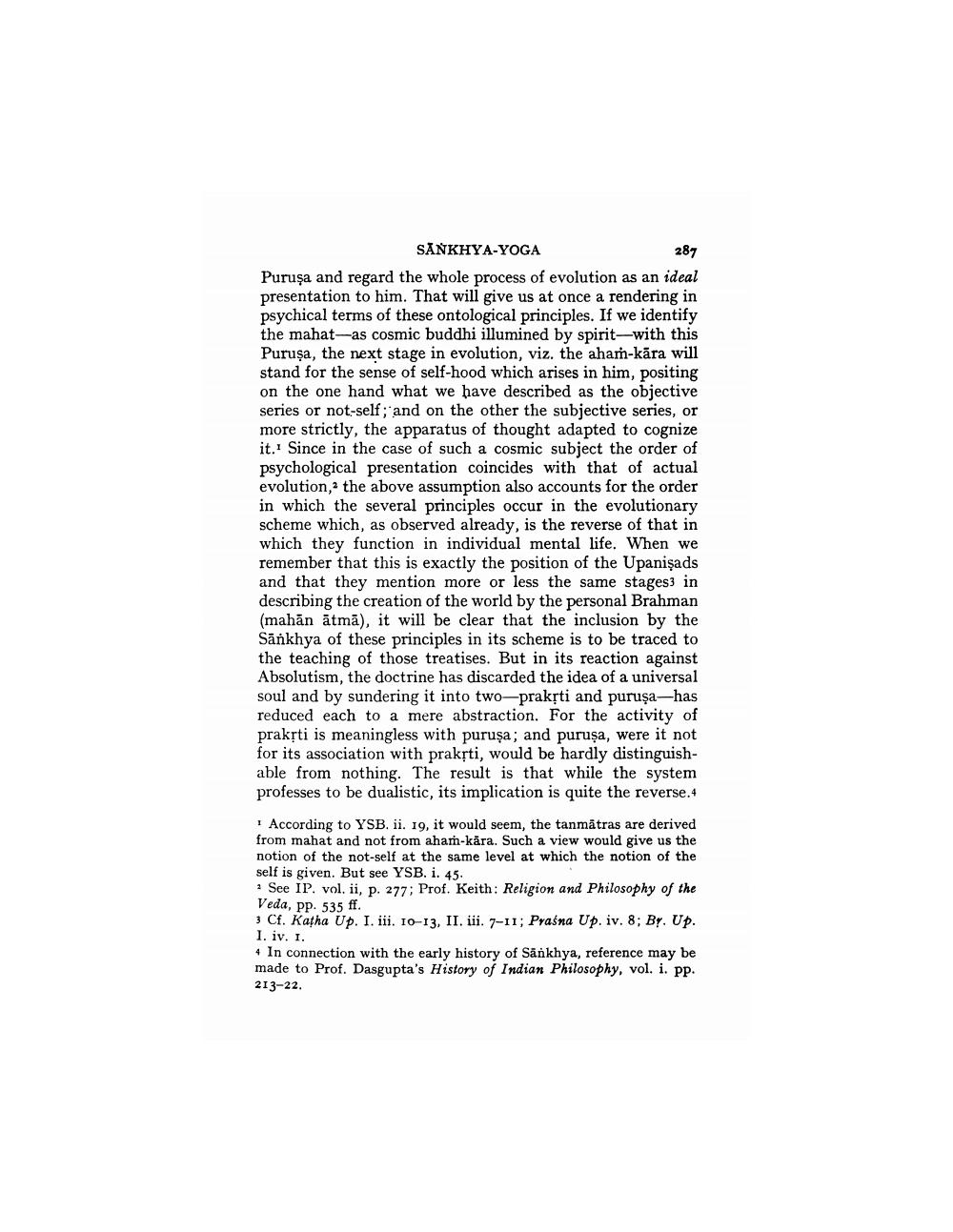________________
SANKHYA-YOGA
287 Puruşa and regard the whole process of evolution as an ideal presentation to him. That will give us at once a rendering in psychical terms of these ontological principles. If we identify the mahat-as cosmic buddhi illumined by spirit-with this Puruşa, the next stage in evolution, viz. the ahar-kāra will stand for the sense of self-hood which arises in him, positing on the one hand what we have described as the objective series or not-self; and on the other the subjective series, or more strictly, the apparatus of thought adapted to cognize it. Since in the case of such a cosmic subject the order of psychological presentation coincides with that of actual evolution, the above assumption also accounts for the order in which the several principles occur in the evolutionary scheme which, as observed already, is the reverse of that in which they function in individual mental life. When we remember that this is exactly the position of the Upanişads and that they mention more or less the same stages3 in describing the creation of the world by the personal Brahman (mahăn ātmā), it will be clear that the inclusion by the Sankhya of these principles in its scheme is to be traced to the teaching of those treatises. But in its reaction against Absolutism, the doctrine has discarded the idea of a universal soul and by sundering it into two-prakrti and puruşa-has reduced each to a mere abstraction. For the activity of prakrti is meaningless with purusa; and puruşa, were it not for its association with praksti, would be hardly distinguishable from nothing. The result is that while the system professes to be dualistic, its implication is quite the reverse.4
1 According to YSB. ii. 19, it would seem, the tanmatras are derived from mahat and not from aham-kära. Such a view would give us the notion of the not-self at the same level at which the notion of the self is given. But see YSB. i. 45. * See IP. vol. ii, p. 277; Prof. Keith: Religion and Philosophy of the Veda, PP. 535 ff. 3 Cf. Katha Up. I. iii. 10-13, II. iii. 7-11; Prašna Up. iv. 8; By. Up. I. iv. I. * In connection with the early history of Sankhya, reference may be made to Prof. Dasgupta's History of Indian Philosophy, vol. i. pp. 213-22.




